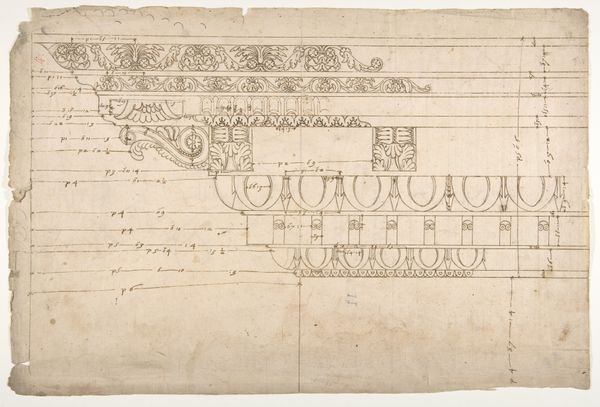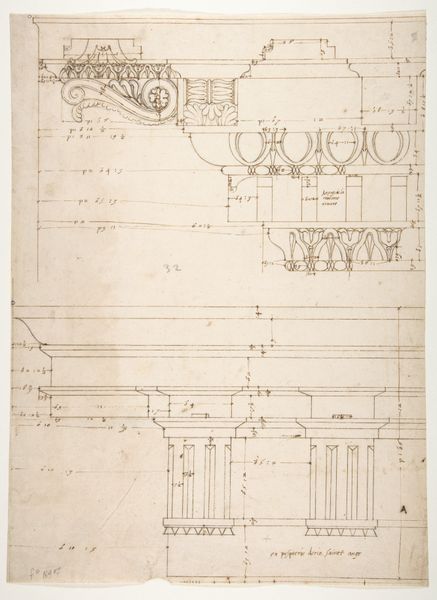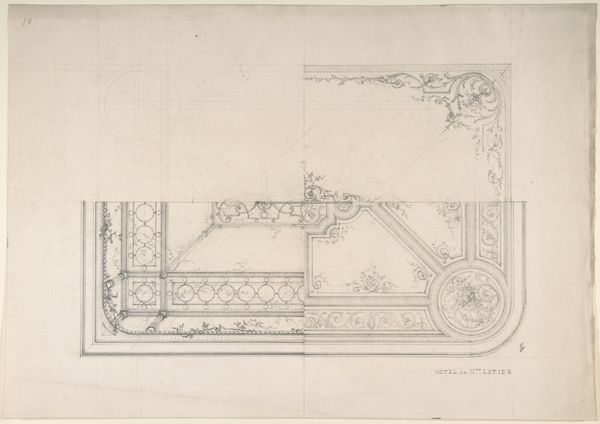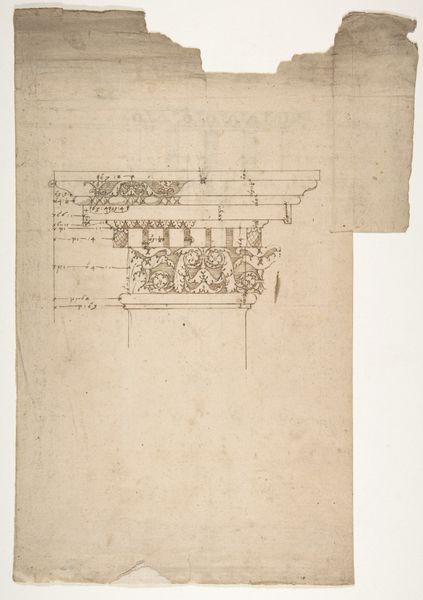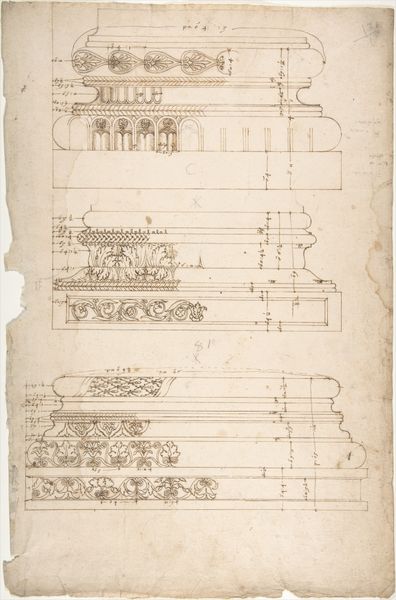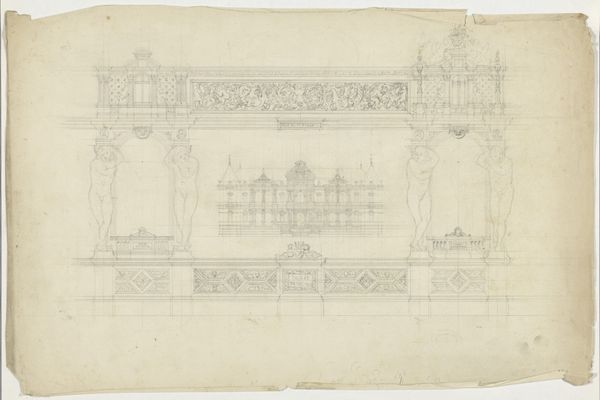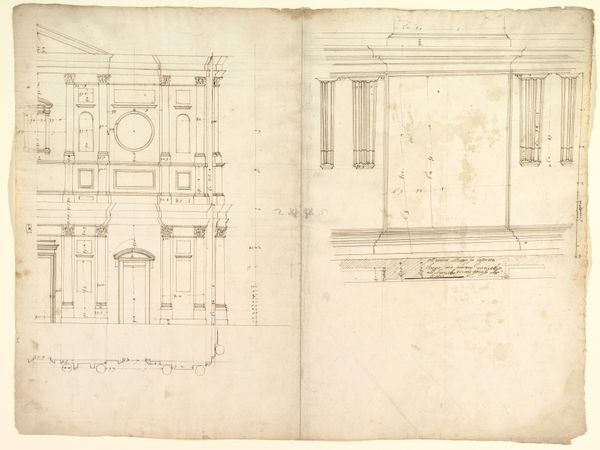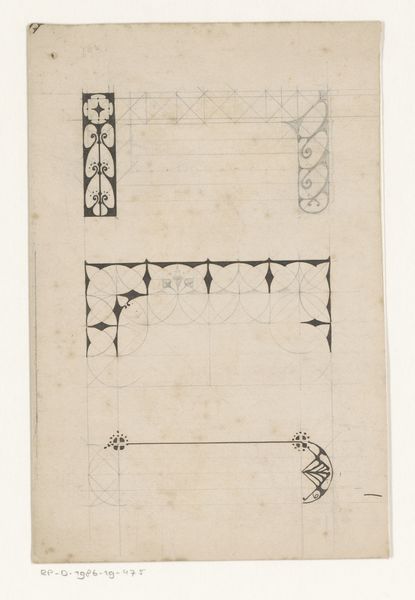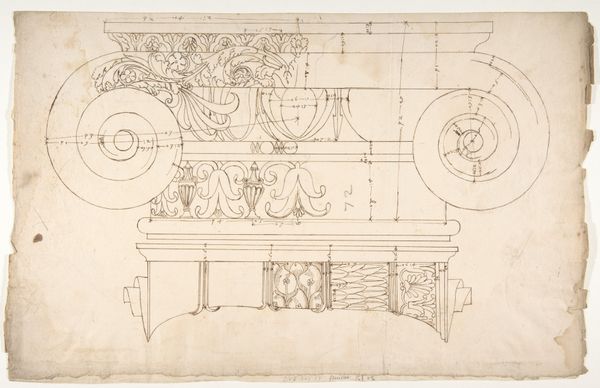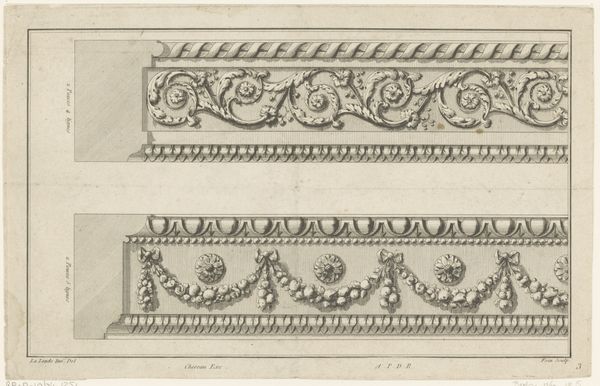
Domus Augustiana, cornice, elevation in profile, ornamental detailing (recto) Unidentified, cornice, elevation in profile, ornamental detailing (verso) 1500 - 1560
0:00
0:00
drawing, print, etching
#
drawing
#
toned paper
# print
#
etching
#
etching
#
11_renaissance
#
geometric
#
line
#
academic-art
#
decorative-art
#
italian-renaissance
Dimensions: sheet: 8 3/16 x 11 9/16 in. (20.8 x 29.3 cm)
Copyright: Public Domain
Editor: So, this drawing is titled *Domus Augustiana, cornice, elevation in profile, ornamental detailing*. It’s an etching, dating back to sometime between 1500 and 1560. What strikes me is how precise and technical it looks, like an architectural blueprint, but the ornamental details seem almost dreamlike. How do you interpret this work? Curator: This etching breathes the air of Renaissance aspirations! Look closely – what symbols recur in the cornice design? Think about what a cornice represents: the crowning element, the part that mediates between a building and the heavens. In this drawing, we see repeated botanical motifs. Editor: Yes, like stylized leaves and maybe some floral elements. So you see the ornament like symbols carrying meaning? Curator: Exactly! Renaissance architects saw themselves as reviving the glory of the classical world. Botanical forms were prevalent, signifying renewal, growth, and abundance—virtues associated with strong, flourishing states. It connects this structure, visually, to an idea of sustained prosperity. Note the almost mathematical precision with which these forms are rendered alongside numerical annotations. What do you suppose the relationship is between geometry and aesthetics here? Editor: Geometry provides structure to art, making art precise instead of messy and uncontrolled, perhaps? It feels as though mathematical correctness or rationality is an integral component to beauty during the Renaissance. Curator: Precisely. Now think about the 'Domus Augustiana.' What emotions or values did Roman Emperors associate with architectural details like this? The Romans believed beauty, virtue, and power were interconnected; art reminded those inside what they ought to think, do and value. Editor: So this isn’t just a pretty picture; it’s a representation of power and an idealized image. It brings those distant times so much closer! Curator: Exactly. These seemingly simple etchings allow us to re-enter the mindset of a culture, and connect us through shared visual language.
Comments
No comments
Be the first to comment and join the conversation on the ultimate creative platform.

